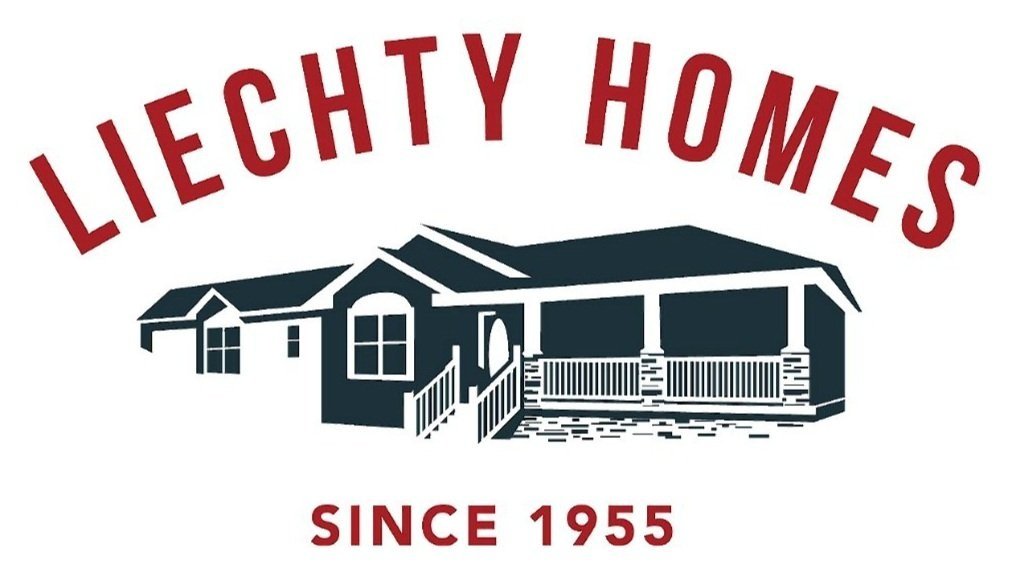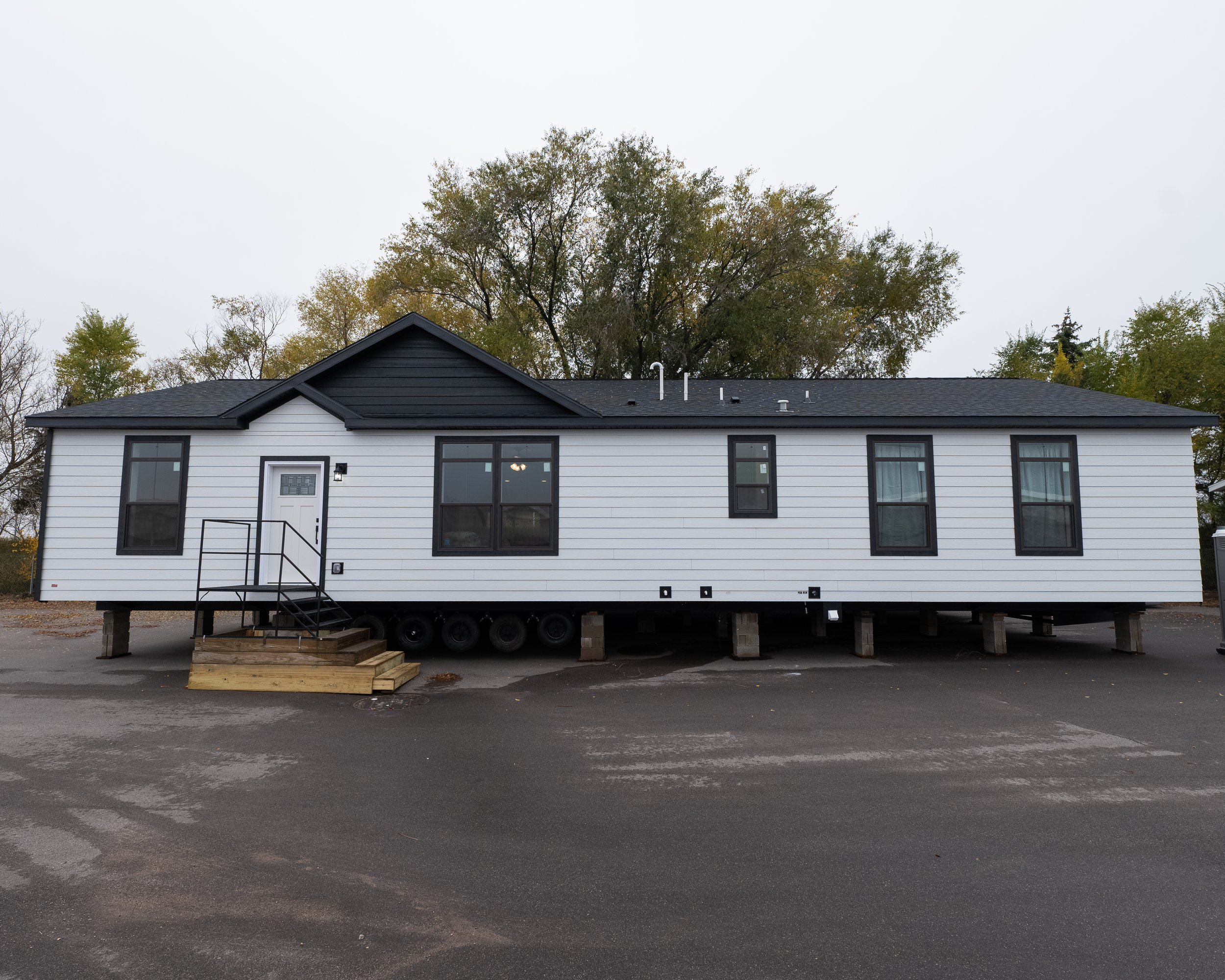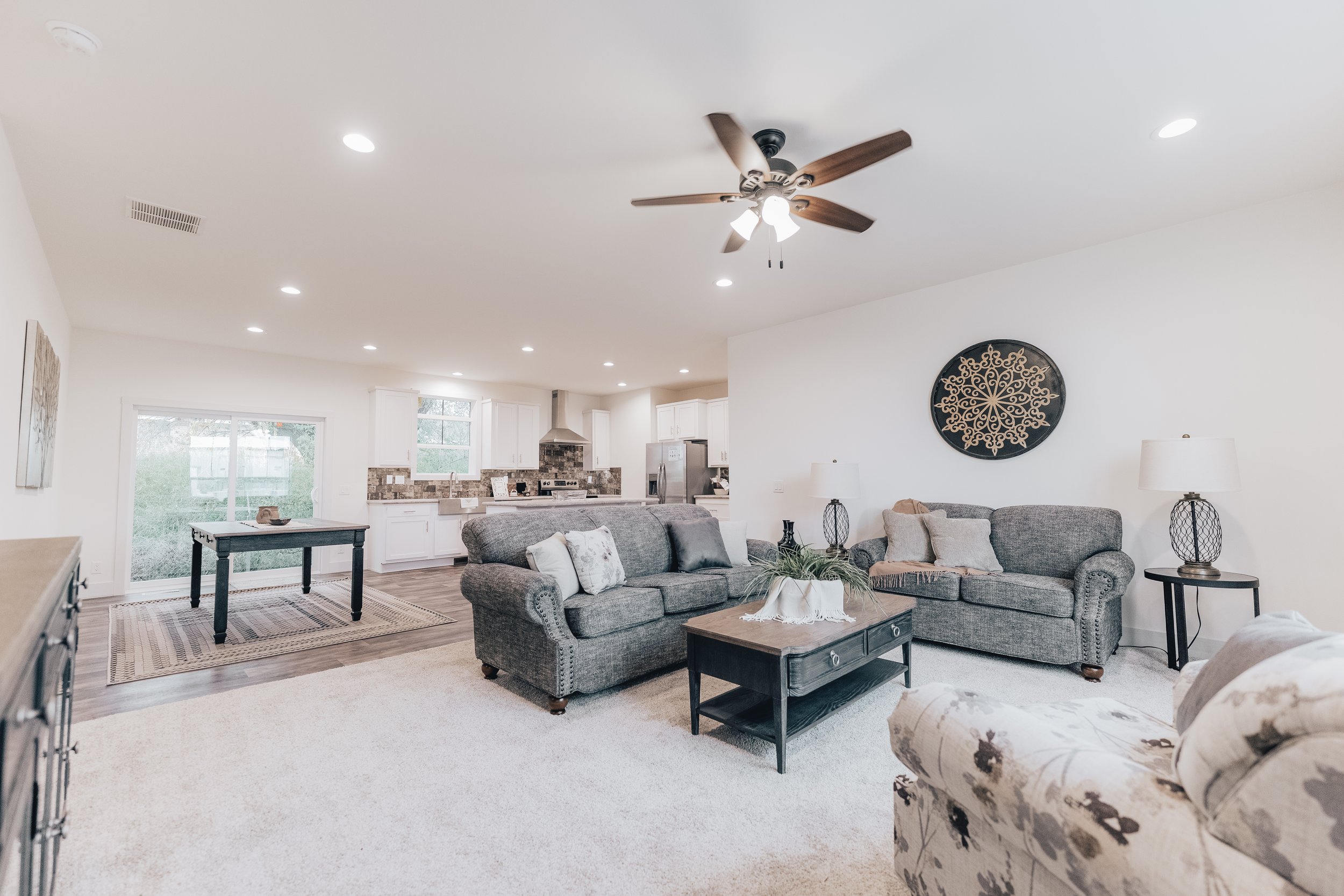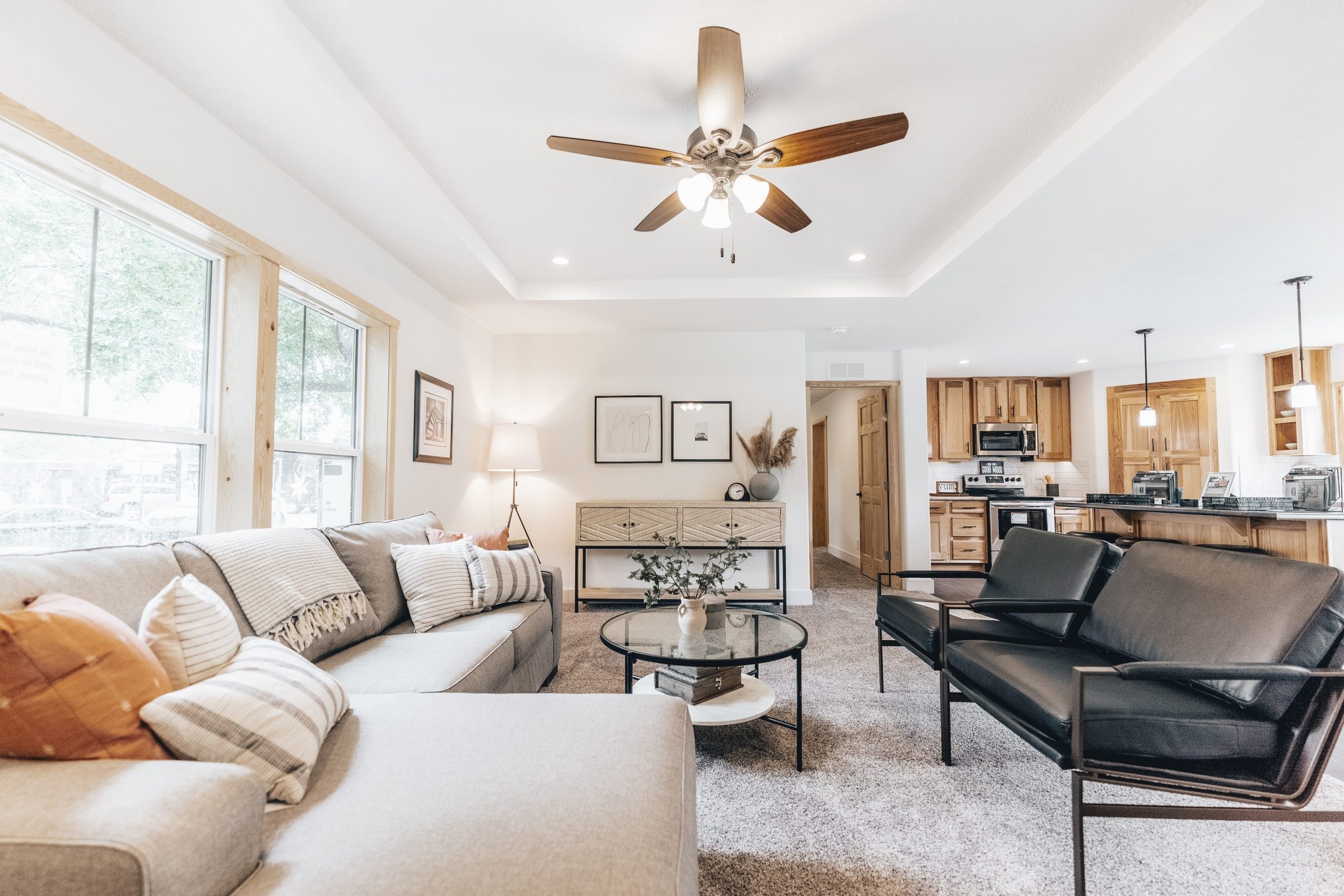Modular Vs Manufactured Homes
Factory-built homes are a great option for those looking for a convenient and cost effective way to build a quality home. Prospective home buyers have a couple of options when it comes to choosing the home that is right for them; a manufactured or a modular home. The important thing that manufactured and modular homes have in common is that both are built in a climate controlled factory environment, which means that building materials are protected from the elements and construction timelines are not impacted by weather delays. Additionally, the streamlined building process helps reduce waste which results in a more affordable home that can be completed much more quickly than a typical site-built home project. So no matter which type of home you choose, you are getting a quality product that will save you money and time over a traditional site-built home project.
Exterior Photo of Schult Landmark 50th Anniversary Floor Plan
There are also a few key differences between a modular and a manufactured home. One is the type of foundation each is set on. Manufactured homes are constructed on a steel frame with wheels attached-making them easy to move from one location to another-and are typically set on a piers and beam or slab foundation. Modular homes are constructed in sections that are then transported to the building site and assembled on a permanent foundation, usually a basement or crawl space. Another difference is the codes the homes are built to. Manufactured homes are built to the standards set by the Department of Housing and Urban Development (HUD) and are subject to strict regulations and inspections, whereas modular homes are built to comply with applicable local building codes and standards and are subject to the same inspections as traditional site-built homes, which can vary by location.
Schult Landmark Floor Plan
Living Spaces of Schult Modular Floor Plans
As with any homebuyer, those considering a factory-built home are concerned about the long-term value of their investment. While it can depend on where a home is set (for example, a manufactured home on rented land-such as in a manufactured housing community-is treated differently than one tied to land owned by the homebuyer), Kevin Blackwood, Office Manager and Sales Associate at Liechty Homes Bismarck thinks that buyers need not be concerned. “Nowadays a manufactured or modular home is so similar to a site-built home, its value will be determined more by the housing market than anything else,” he says. He also notes that quality matters; a well-built home, like those built by Schult and BonnaVilla, will maintain better value over time than one of lower quality.
BonnaVilla Two Story Cape Cod Modular Home
With a dynamic range of floor plans, Liechty Homes can provide you with a wide variety of modular or manufactured homes
While some customers may be concerned that choosing manufactured over modular significantly limits their options in customizing their factory-built home, this is generally not the case. Many floor plans offer the same choices of features and finishes no matter what type of home is being purchased. Blackwood notes that most floor plans can be increased or decreased in length, depending on the customer’s needs. For example, in Liechty Homes’ model home at the North Dakota State Fair we took the popular Legend 86 floor plan and added two feet in length to the middle of the home, creating openness and flexibility in the main living, kitchen, and dining areas. “Many customers ask to customize things, and they’re pleased to find that they’re able to make a floor plan work for them,” he says.
The Legend 86 Modular Home from Schult Homes
Ultimately, cost and convenience is the deciding factor for most buyers. For a modular home build, the customer is responsible for much of the site work, including excavation, foundation, hooking up sewer and water lines, furnace, water heater, and central air, among other things. Coordinating these projects can be time consuming and costs can add up quickly. When purchasing a manufactured home, we take on most of the construction headaches for our customers: “We do everything except the gas and electric for one set price, and we do the final hook up on water and sewer and provide the central air,” says Blackwood. Being able to more closely predict costs and timelines is highly attractive to most customers, and our sales associates estimate that about 80%-90% of Liechty Homes customers choose a manufactured home for these reasons.
Financing options can be determined based on what type of home is chosen and where the home will be set once completed. Blackwood says that a modular home will generally be financed the same way as a site-built home, and some customers opt to begin with a construction loan and roll over to a traditional loan when their home is completed. A manufactured home set on land owned by the customer is generally treated the same way. Options vary when a home is being purchased to put on rented land, and Bryce Livingston, Sales Associate at Liechty Homes Jamestown notes that the key is finding the right bank for a home-only loan, and that is where our sales staff can help. “We really work with our customers to help them find the right financial institution for their situation.”
Our sales staff agree that when working with customers through the buying process, their job is to get a sense of what they need and help them weigh their options-not push them in one direction or another. However, they do say that when customers are considering a modular home build, they may gently try to steer them toward considering a basement foundation over a crawl space. Tim Carl, Office Manager and Sales Associate at Liechty Homes Duluth, says that adding a crawl space in his area requires extensive excavation as it has to be dug below the frost line, so the cost savings is not as significant as a customer may think it is. “You also need to think about accessing utilities in a crawl space,” he says. Many customers consider adding an exterior panel to access them from the crawl space to save the space in their floor plan, he adds, “but if they ask my opinion I tell them I personally don’t want to go outside to check my furnace if it goes out at 2 am!” Kevin Blackwood also urges buyers to consider the added resale value of a basement: “For the little bit of difference in cost, I think it makes sense to add the full basement as it will be more attractive to future buyers.”
There is a lot to consider when buying a factory-built home, but our goal at Liechty Homes is to thoughtfully guide our customers through the process that will ultimately put them in a home they love that fits their needs. Contact the sales center near you to learn more.
Multi-box modular unit for apartment complex provided by BonnaVilla Homes. Their are many different configurations for a modular home project.
Frequently Asked Questions: Modular vs. Manufactured Homes
Q: What is the single most important difference between a modular home and a manufactured home?
A: The fundamental difference is the building code. A manufactured home is built to the federal HUD Code (a national standard), remains on a permanent steel chassis, and is regulated by HUD. A modular home is built to the same local and state building codes (IRC) as a traditional site-built house, is placed on a foundation without a chassis, and is regulated by state and local building officials in North Dakota, South Dakota, and Minnesota.
Q: Do I have the same financing options for both modular and manufactured homes on owned land?
A: Yes, essentially. When both a modular home and a modern manufactured home are placed on land you own and permanently affixed to a foundation, they are typically classified as real property. This classification opens up the full range of traditional mortgage financing options, including Conventional, FHA, VA, and USDA loans. Liechty Homes helps secure these Land-Home Packages for either home type.
Q: Is one type of home better for long-term value and appreciation than the other?
A: For long-term investment value, both homes perform well when placed on owned land. The potential for appreciation is determined more by the home's maintenance, the quality of the installation, and the surrounding housing market, rather than the original building code. Liechty Homes emphasizes high-quality construction for both Schult and BonnaVilla models to ensure maximum durability and long-term resale value for all customers in the upper Midwest.
Q: Which home type offers more customization—modular or manufactured?
A: Modular homes generally offer slightly more flexibility for architectural features, rooflines, and multi-story designs because they must comply with complex local building codes. However, modern manufactured homes offer a wide range of interior customization for finishes, layouts, and upgrades. Your choice depends on whether you prioritize maximum flexibility (modular) or a slightly quicker, often more affordable path to homeownership (manufactured).






